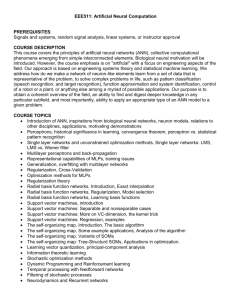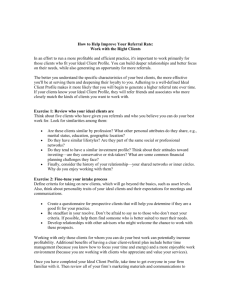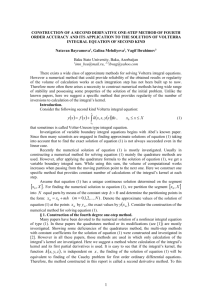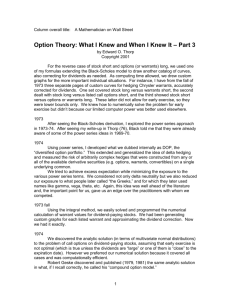International Conference «Inverse and Ill
advertisement
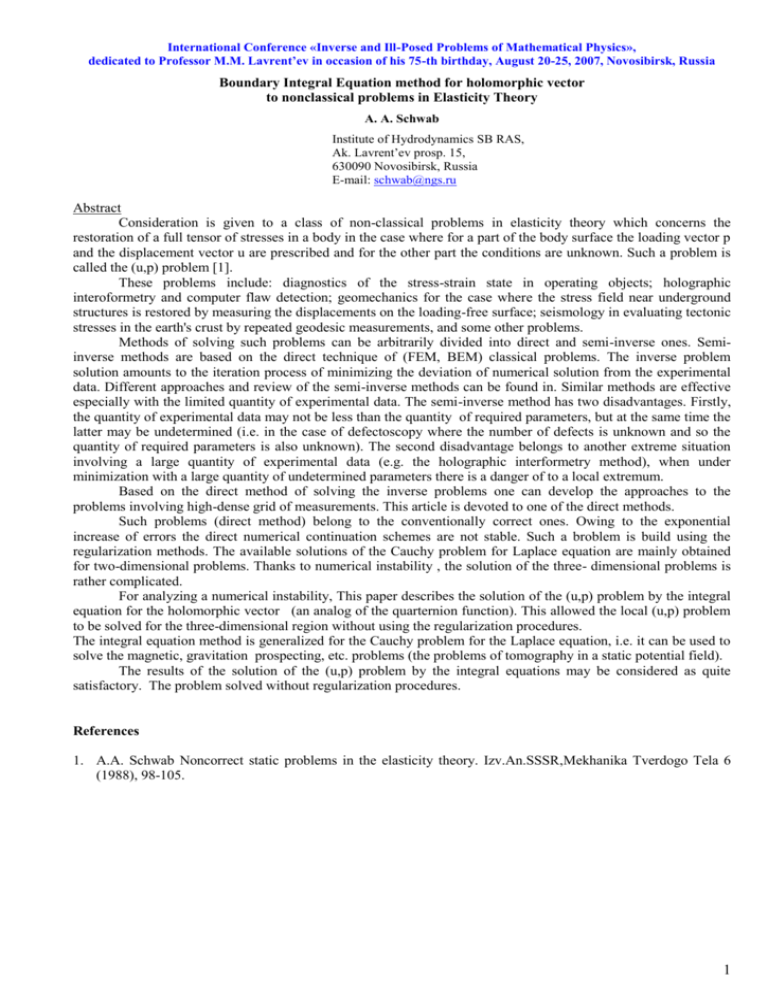
International Conference «Inverse and Ill-Posed Problems of Mathematical Physics», dedicated to Professor M.M. Lavrent’ev in occasion of his 75-th birthday, August 20-25, 2007, Novosibirsk, Russia Boundary Integral Equation method for holomorphic vector to nonclassical problems in Elasticity Theory A. A. Schwab Institute of Hydrodynamics SB RAS, Ak. Lavrent’ev prosp. 15, 630090 Novosibirsk, Russia E-mail: schwab@ngs.ru Abstract Consideration is given to a class of non-classical problems in elasticity theory which concerns the restoration of a full tensor of stresses in a body in the case where for a part of the body surface the loading vector p and the displacement vector u are prescribed and for the other part the conditions are unknown. Such a problem is called the (u,p) problem [1]. These problems include: diagnostics of the stress-strain state in operating objects; holographic interoformetry and computer flaw detection; geomechanics for the case where the stress field near underground structures is restored by measuring the displacements on the loading-free surface; seismology in evaluating tectonic stresses in the earth's crust by repeated geodesic measurements, and some other problems. Methods of solving such problems can be arbitrarily divided into direct and semi-inverse ones. Semiinverse methods are based on the direct technique of (FEM, BEM) classical problems. The inverse problem solution amounts to the iteration process of minimizing the deviation of numerical solution from the experimental data. Different approaches and review of the semi-inverse methods can be found in. Similar methods are effective especially with the limited quantity of experimental data. The semi-inverse method has two disadvantages. Firstly, the quantity of experimental data may not be less than the quantity of required parameters, but at the same time the latter may be undetermined (i.e. in the case of defectoscopy where the number of defects is unknown and so the quantity of required parameters is also unknown). The second disadvantage belongs to another extreme situation involving a large quantity of experimental data (e.g. the holographic interformetry method), when under minimization with a large quantity of undetermined parameters there is a danger of to a local extremum. Based on the direct method of solving the inverse problems one can develop the approaches to the problems involving high-dense grid of measurements. This article is devoted to one of the direct methods. Such problems (direct method) belong to the conventionally correct ones. Owing to the exponential increase of errors the direct numerical continuation schemes are not stable. Such a broblem is build using the regularization methods. The available solutions of the Cauchy problem for Laplace equation are mainly obtained for two-dimensional problems. Thanks to numerical instability , the solution of the three- dimensional problems is rather complicated. For analyzing a numerical instability, This paper describes the solution of the (u,p) problem by the integral equation for the holomorphic vector (an analog of the quarternion function). This allowed the local (u,p) problem to be solved for the three-dimensional region without using the regularization procedures. The integral equation method is generalized for the Cauchy problem for the Laplace equation, i.e. it can be used to solve the magnetic, gravitation prospecting, etc. problems (the problems of tomography in a static potential field). The results of the solution of the (u,p) problem by the integral equations may be considered as quite satisfactory. The problem solved without regularization procedures. References 1. A.A. Schwab Noncorrect static problems in the elasticity theory. Izv.An.SSSR,Mekhanika Tverdogo Tela 6 (1988), 98-105. 1

